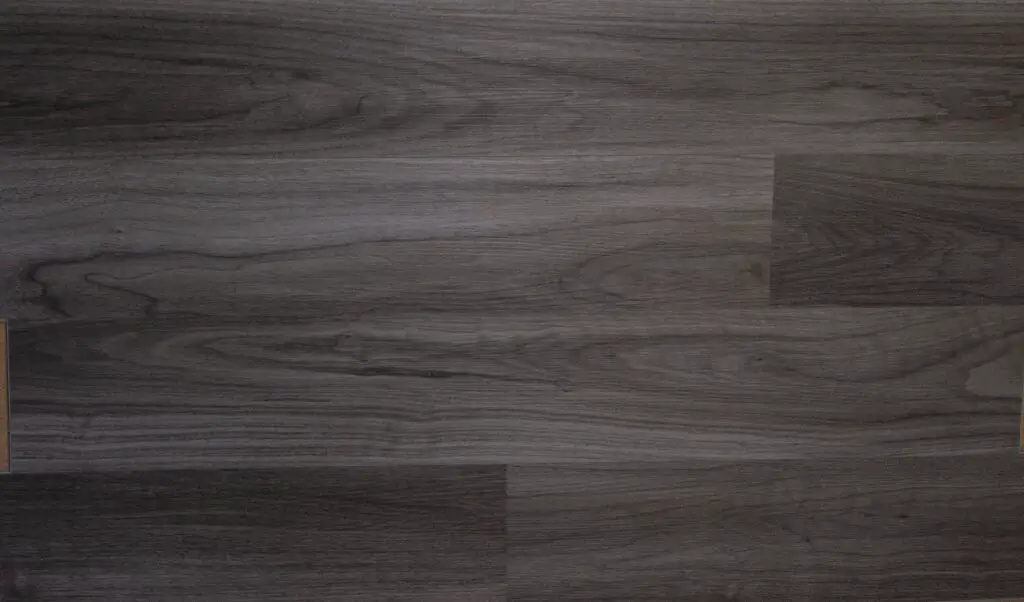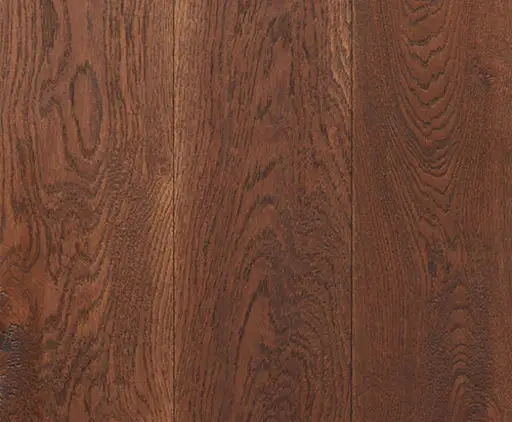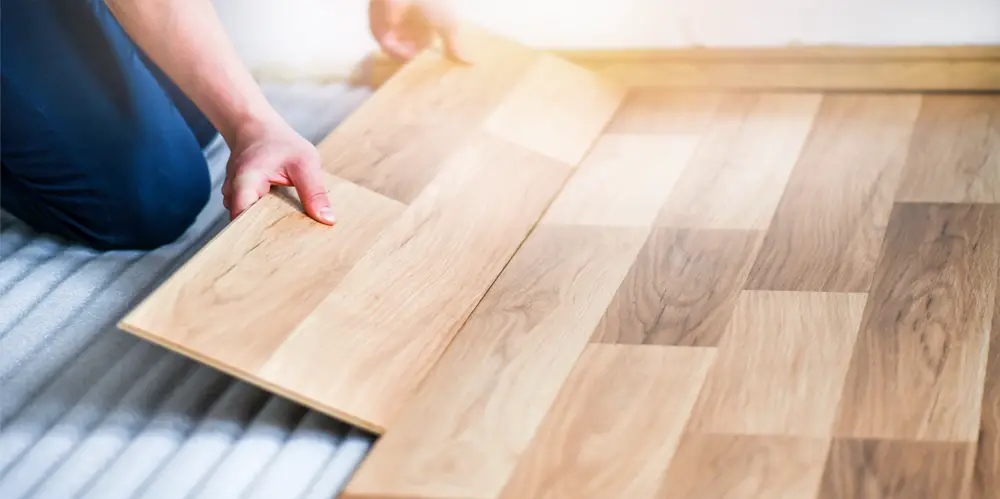When it comes to flooring options, homeowners and contractors alike often find themselves deciding between laminate and engineered flooring. Despite their apparent similarities, there are distinct differences that set them apart.
In this article, we will delve into the key aspects that distinguish these two types of flooring, exploring the “difference between laminate and engineered flooring” in terms of their composition, durability, aesthetics, installation process, and cost, allowing you to make an informed decision for your home or project.
Laminate flooring is a multi-layer synthetic flooring product that simulates wood or sometimes stone with a photographic applique layer under a clear protective layer. The inner core layer is composed of melamine resin and fiberboard materials, providing stability and resistance to warping.
This type of flooring is known for its durability, cost-effectiveness, and ease of installation. Its top layer is designed to resist wear, making it a popular choice for high-traffic areas. However, because it’s not made of natural wood, laminate flooring cannot be refinished or sanded once it’s worn down or damaged.
Engineered flooring is a versatile and practical option that combines the sophistication of genuine hardwood with the high-performance characteristics of man-made materials.
It is composed of several layers — the top layer is real hardwood, which can vary in thickness, followed by several layers of plywood or high-density fiberboard.
This multi-layer construction lends engineered flooring exceptional strength and resilience, making it suitable for areas where humidity and temperature fluctuate, like basements and kitchens.
Unlike laminate flooring, engineered flooring can be sanded and refinished, depending on the thickness of the top layer, which extends the life of the floor. However, it tends to be more expensive than laminate due to its hardwood surface.
Composition
Laminate Flooring Composition

Laminate flooring is constructed in distinct layers, each serving a unique purpose to ensure durability, aesthetic appeal, and cost-effectiveness. Here is a detailed breakdown:
The Wear Layer: This is the topmost surface of laminate flooring, designed specifically to resist wear and tear. Typically, it’s composed of an aluminum oxide chemical treatment that provides an incredibly hard and durable surface. This layer is resistant to scratches, dents, and even fading from direct sunlight.
The Design Layer: Directly beneath the wear layer is the design layer, which is essentially a high-resolution photograph that replicates the look of natural materials like wood or stone.
The sophistication of modern printing technology allows for strikingly realistic visuals that can mimic a variety of aesthetic styles and preferences.
The Core Layer: This is the thickest layer of laminate flooring and is composed of high-density fiberboard (HDF). HDF is a type of engineered wood product that’s designed to be highly stable and resistant to moisture.
This layer provides the flooring with its structure and contributes greatly to its resistance to impacts and warping.
The Backing Layer: The final layer of laminate flooring is the backing layer, which is primarily there to add extra stability and moisture resistance. This layer often includes an additional moisture barrier to further protect the core layer from potential damage, ensuring the longevity of the floor as a whole.
It also helps to balance the floor and prevent it from bending or collapsing under pressure.
Engineered Flooring Composition

Engineered flooring, is composed of several layers, each serving its purpose in contributing to the overall performance and aesthetic of the flooring. Here’s a comprehensive breakdown of the layers of engineered flooring:
The Veneer or Top Wear Layer: The top layer of engineered flooring is made from a thin slice of real hardwood. This gives engineered flooring the authentic look and feel of real wood, which adds to its appeal.
The thickness of this layer varies, but it typically ranges between 0.5mm and 4mm. This layer is also what allows engineered flooring to be refinished if it gets worn down or damaged over time.
The Core Layer: Beneath the veneer layer is the core, which usually consists of several layers of plywood. These layers are arranged in a cross-grain configuration, which provides strength and stability.
This construction prevents the floor from expanding and contracting with changes in humidity and temperature, making engineered flooring suitable for rooms where moisture levels and temperatures fluctuate.
The Backing Layer: The bottom layer, or the backing layer, provides additional stability. It is usually made from plywood or hardwood. This layer helps the floor to resist warping and adds overall structural integrity.
Durability and Maintenance
Durability of Laminate Flooring
Laminate flooring, characterized by its resistance to stains, scratches, and impact, is known for its durability. Its top layer, often made from high-density fiberboard (HDF), is covered with a high-resolution photographic image of real wood or stone and topped with a transparent, robust ‘wear layer’ that protects the surface against wear and tear.
This wear layer is what makes laminate flooring incredibly hardy and resistant to dents, scratches, and stains, making it an ideal choice for high-traffic areas or households with pets.
However, while the surface of laminate flooring is water-resistant, it is not waterproof. Excessive moisture can seep into the HDF, causing it to swell and damage the integrity of the floor.
Durability of Engineered Flooring
On the other hand, engineered flooring is renowned for its resilience and longevity. Constructed with multiple layers of plywood and topped with a veneer of real hardwood, engineered floors offer the beauty of solid hardwood with the added benefit of greater stability.
The multiple-ply plank design counteracts the tendency of wood to expand or contract with changes in humidity and temperature, resulting in less warping or cracking than solid wood.
Furthermore, depending on the thickness of the top layer, engineered flooring can be sanded and refinished several times, greatly increasing its lifespan. However, like laminate, engineered wood is not entirely immune to water damage. Prolonged exposure to moisture can lead to warping or delamination.
Comparison of Maintenance Requirements
When it comes to the maintenance requirements of these two types of flooring, both laminate and engineered flooring offer ease and convenience.
Laminate flooring, thanks to its tough outer layer and resin coating, is resistant to stains and spills and simply needs regular sweeping or vacuuming to remove dust and debris. For tougher stains, a damp mop or a laminate cleaner is usually sufficient.
However, caution is needed to prevent water from sinking into the joints and causing damage.
Engineered flooring, on the other hand, requires a little more attention, but is still relatively easy to maintain. Regular sweeping and vacuuming are key to preventing dust and dirt from scratching the surface.
As it is topped with real wood, it can be cleaned with products designed for hardwood floors. While engineered floors can handle spills better than solid hardwood, it’s important to wipe up liquids quickly to prevent potential damage.
And while engineered flooring can be sanded and refinished if it gets severely scratched or dented, this isn’t an option with laminate flooring. Thus, in terms of maintenance, both types of flooring have their pros and cons to consider.
Installation Process
In terms of installation, both laminate and engineered flooring are designed for DIY enthusiasts, thanks to their user-friendly installation processes. However, there are distinct differences between the two that may affect the ease of installation and the time it takes.
Laminate flooring uses a click-and-lock or fold-and-lock system that allows the planks to fit together like puzzle pieces. The process is relatively straightforward, usually requiring no glue, nails, or staples.
The underlayment is typically rolled out first, followed by the planks laid from left to right. The simplicity of this process allows for a quicker installation, often making laminate flooring a preferred choice for those seeking a quick flooring update.
On the other hand, engineered flooring, while still manageable for the skilled DIYer, can be a bit more complex due to the multiple installation methods available.
These can include floating, where the planks are glued or clicked together; gluing, where the adhesive is applied directly to the substrate; or nailing, where nails or staples are used to secure the planks to the subfloor.
These options provide installation flexibility but may require a bit more skill and time compared to laminate flooring.
In comparison, both types of flooring offer their advantages in terms of installation. Laminate flooring edges out engineered flooring in terms of simplicity and speed, but engineered flooring offers a greater degree of flexibility, which may be advantageous in certain installation scenarios.
Cost Considerations
When it comes to cost, both laminate and engineered flooring offer different advantages.
Laminate flooring is generally more affordable, with prices ranging from $1 to $5 per square foot for materials alone. The low cost of laminate is mainly due to its manufacturing process, which involves the fusion of four layers of material into a single plank.
This process allows for high-volume production and a wide variety of designs, which helps to keep costs low. Additionally, the ease of installation reduces labor expenses, making it a cost-effective solution for budget-conscious homeowners.
Engineered flooring, on the other hand, is a bit more costly, with prices generally ranging from $3 to $10 per square foot. The price can climb even higher for premium grades.
This cost is reflective of the quality and composition of the flooring, which features a top layer of real wood. The range of prices also accounts for the varying thicknesses of the wood layer, with thicker layers commanding higher prices due to their enhanced durability and the option for refinishing.
While the installation of engineered flooring can be more labor-intensive, and therefore more costly, its longer lifespan can offset these initial costs over time.
In comparison, while laminate flooring is more budget-friendly upfront, engineered flooring can be a worthwhile investment in the long run, particularly for homeowners seeking a more durable and authentic wood finish.
It’s important to consider both the immediate and long-term flooring costs, alongside other factors such as aesthetics and durability, when choosing between laminate and engineered flooring.
Related Topic:
Conclusion
In conclusion, both laminate and engineered flooring have their unique advantages and potential use cases. If you’re looking for a cost-effective, resilient, and diverse design option, laminate flooring might be the better choice.
However, if you prefer a more authentic wood finish, greater durability, and the possibility of refinishing over time, engineered flooring could be a worthy investment.
The decision ultimately hinges on your budget, aesthetic preference, and long-term home improvement goals. As a homeowner, understanding these key differences can guide you in making an informed choice that aligns with your specific needs and lifestyle.
FAQs
Can engineered flooring be refinished?
Yes, engineered flooring can be sanded and refinished – a key advantage over laminate flooring. The ability to refinish depends on the thickness of the top wood layer. Thicker layers allow for more instances of refinishing, extending the lifespan of the flooring.
Is laminate flooring water-resistant?
Laminate flooring tends to be more water-resistant than engineered wood flooring. It has a tightly sealed surface, which makes it a suitable choice for areas prone to moisture like kitchens and bathrooms. However, it’s not entirely waterproof, so spills should be wiped up promptly to prevent damage.

1 thought on “Difference Between Laminate And Engineered Flooring: Laminate vs. Engineered”